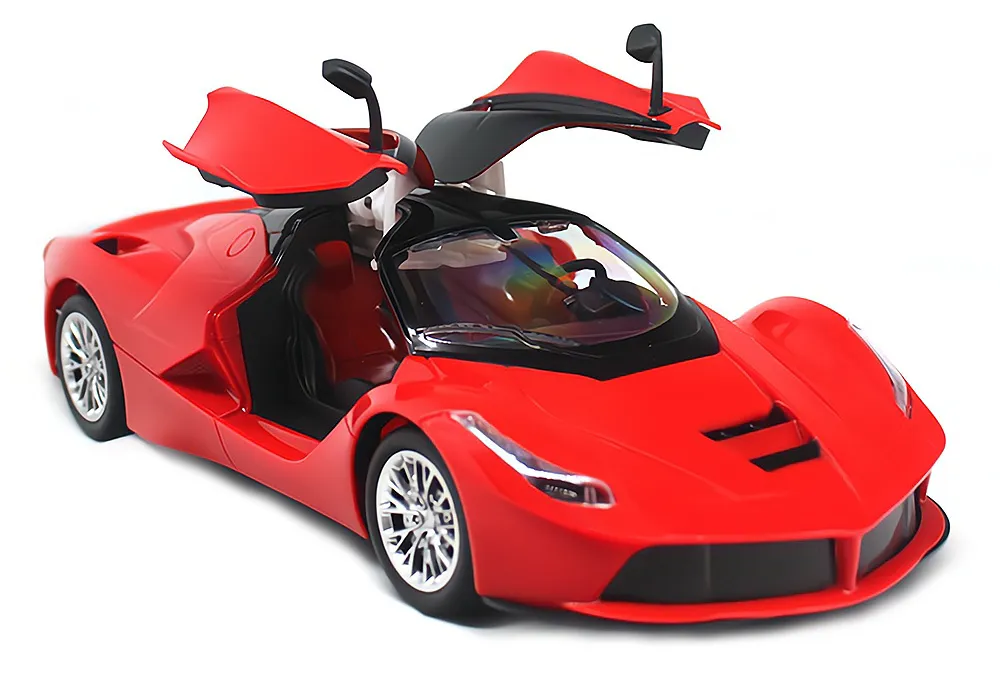
When it comes to RC drifting, having a well-designed and tuned suspension system is crucial for achieving optimal performance and control. The suspension system plays a vital role in keeping the wheels in contact with the ground, absorbing shocks and vibrations, and maintaining stability during drift maneuvers. In this article, we will explore the importance of suspension systems in RC drift cars and discuss key factors to consider when optimizing your suspension setup.
- Stability and Control
One of the primary functions of a suspension system in RC drift cars is to provide stability and control. During drifts, the rear wheels lose traction and slide, while the front wheels steer the car. A properly tuned suspension system helps maintain control by keeping the wheels in contact with the ground, allowing for precise steering input and reliable traction. It helps prevent the car from spinning out or losing balance during high-speed drifts, ensuring a smoother and more controlled drifting experience.
- Absorption of Shocks and Vibrations
RC drift cars often encounter various surfaces and obstacles during their runs. The suspension system plays a crucial role in absorbing shocks and vibrations, minimizing the impact on the chassis and components. This not only enhances the durability of the car but also improves overall performance by allowing the wheels to maintain better contact with the ground. A well-designed suspension system helps maintain stability and prevent excessive bouncing or loss of control when encountering bumps or uneven terrain.
- Weight Transfer and Weight Distribution
The suspension system also influences weight transfer and weight distribution in RC drift cars. During drifts, weight transfer occurs as the car shifts its weight from one side to the other, aiding in initiating and maintaining drift angles. The suspension setup affects how weight is transferred between the front and rear wheels, enabling precise control over the car’s balance and drift characteristics.
Proper weight distribution is essential for achieving optimal grip and handling. A well-tuned suspension system ensures that weight is distributed evenly across the wheels, maximizing traction and allowing for better control during drifts. It also helps prevent excessive oversteer or understeer, resulting in more predictable and controllable drifts.
- Adjustability and Customization
One of the key advantages of RC drift cars is the ability to fine-tune and customize the suspension system according to individual preferences and track conditions. Suspension adjustments allow drivers to optimize their car’s performance for different surfaces, grip levels, and driving styles.
Key suspension components that can be adjusted include:
- Spring Rates: Changing the stiffness of the springs affects how the car responds to bumps and weight transfer. Softer springs provide more grip and stability, while stiffer springs allow for sharper steering response and improved weight transfer.
- Damper Settings: Adjusting the damping, such as rebound and compression, controls the rate at which the suspension compresses and rebounds. It influences how the car handles transitions and absorbs shocks. Softer damping provides a smoother ride, while stiffer damping offers more responsive handling.
- Ride Height: Altering the ride height, or the distance between the chassis and the ground, affects the center of gravity and weight distribution. Lowering the ride height improves stability and reduces body roll, but excessive lowering may compromise ground clearance and cause chassis scraping.
- Camber and Toe Angles: Adjusting the camber and toe angles of the wheels affects tire contact patch and grip. Negative camber increases cornering grip but may reduce straight-line traction, while toe adjustments influence stability and responsiveness.
Fine-tuning the suspension system through these adjustments allows drivers to optimize their RC drift cars for different tracks and driving conditions. It provides a personalized setup that suits individual preferences and maximizes performance potential.
- Tire Wear and Performance
The suspension system also plays a role in tire wear and performance. A well-tuned suspension helps distribute forces evenly across the tires, reducing excessive wear on specific areas. Proper suspension settings can maximize the contact patch of the tires, ensuring consistent grip and reducing tire scrubbing. This not only improves performance but also extends the lifespan of the tires, resulting in cost savings in the long run.
Additionally, adjustments to the suspension setup can help fine-tune the car’s response to different tire compounds and conditions. Softer suspension settings may enhance grip on low-traction surfaces or with harder tires, while stiffer settings can improve response and stability with softer or grippier tires.
In conclusion, the suspension system in RC drift cars plays a critical role in maintaining stability, controlling weight transfer, absorbing shocks, and optimizing performance. A well-designed and tuned suspension setup enhances the overall driving experience, providing better control, stability, and responsiveness during drift maneuvers. By understanding the importance of suspension systems and making necessary adjustments, RC drift enthusiasts can fine-tune their cars to match their individual preferences and maximize their drifting potential on the track.